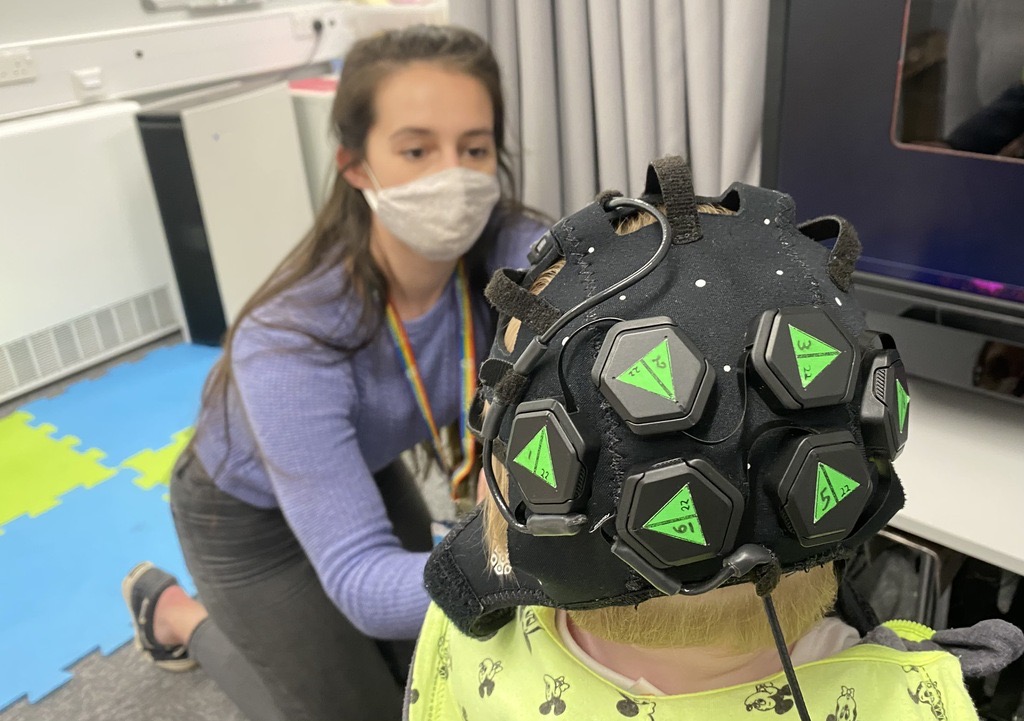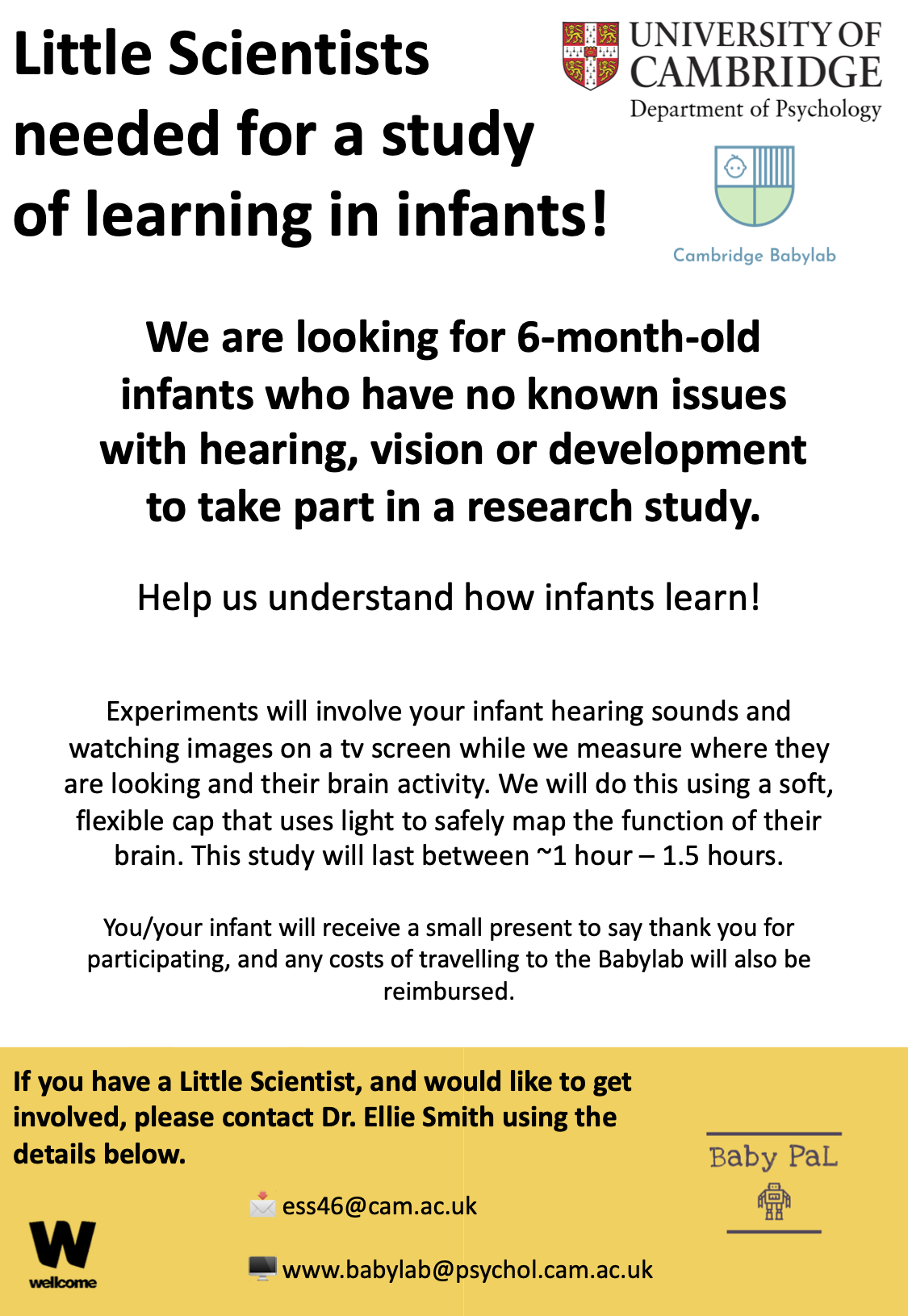
Baby Prediction and Learning Lab
We are interested in exploring how the infant brain learns to build associations between sounds and pictures. We think this process may be disrupted in some developmental disorders, but first it’s important to understand how this learning occurs in typical development.
➡️ Lab Members
➡️ PaL Lab Website
Current Projects
-
How does the infant brain learn to build associations between sounds and pictures?
Prediction and Learning Lab
We are a Lab based in the Department of Psychology at the University of Cambridge.
We are currently recruiting 5- to 7-month-old infants.
What is the purpose of this study?
We are interested in exploring how the infant brain learns to build associations between sounds and pictures. We think this process may be disrupted in some developmental disorders, but first it’s important to understand how this learning occurs in typical development.
What will happen if I take part?
You will be asked to visit the Cambridge Babylab on at least one occasion and may be asked to return to participate on subsequent occasions. However, it’s up to you to decide if you want to return to take part in future studies.
Your infant will always be with you during your visit to the Babylab. During the experiment they will be seated comfortably in a high-chair in front of a computer monitor. You will be able to sit next to them. They will see pictures and hear sounds while their looking behaviour is recorded. All the pictures are designed to be engaging and infant appropriate. If they do not enjoy the experience, then the experiment will end.
We will also ask you to help us put a special hat on your infant that contains light sensors. These light sensors are like tiny torches and are completely harmless to your child. The light is able to measure oxygen levels in different parts of the brain, which change depending on brain activity. The system is completely safe and has been designed for and used with infants in many other studies. Putting the hat on will only take a minute or two while we adjust the size to your child. We would like to look at which areas of the brain respond in babies when they watch videos/pictures and listen to sounds. The session will be videotaped so that the researchers can record your child’s behavioural responses, as well as the brain signals we measure from the light sensors.
We anticipate that this part of the study will last around 30 minutes.
A typical visit to the Babylab will also involve filling out some questionnaires and helping us do some structured play activities with your child. This may take an additional 30-60 minutes or so. However, to save time we will send you a personalised online link so you can complete the questionnaires online, or we can provide hard copies for you to complete at home and post them back to us.
It’s difficult to judge exactly how long your visit to the lab will take, because this will vary from infant to infant depending on how they feel on the day. However, we anticipate that the average visit would last 1-1.5 hours.
How are we ensuring you and your family, as well as the Cambridge Babylab Researchers are as safe as possible in the current climate?
We have developed innovative ideas to make the Lab space safe for you and your family to visit, so we can begin testing again. See this document to understand the COVID-19 related changes we are making. These will be updated every few weeks according to the most up-to-date Government Guidelines.
If you are interested in helping us with our research then please email the Cambridge Babylab (babylab@psychol.cam.ac.uk).
Dr Ellie Smith talks about Baby PaL's most recent project.
Want to know more?



